Are you looking for a job that allows you to use your people skills while still allowing you to grow in other areas of interest? Maybe human resources are the right field for you. A human resources specialist not only gets to help others every day, but they also get to work with other departments and assist them with keeping their company as efficient as possible. Therefore, a human resources resume is essential if you want to land the job of your dreams. Even if you are applying for an entry-level position, this document will show hiring managers that you’re ready, willing, and able to take on more responsibilities. Preparing a solid HR resume takes preparation and practice, but it’ll be accessible once you understand what goes into one. Keep reading for everything from sample resumes to helpful tips on how to write your resume.
Human Resources Resume Example
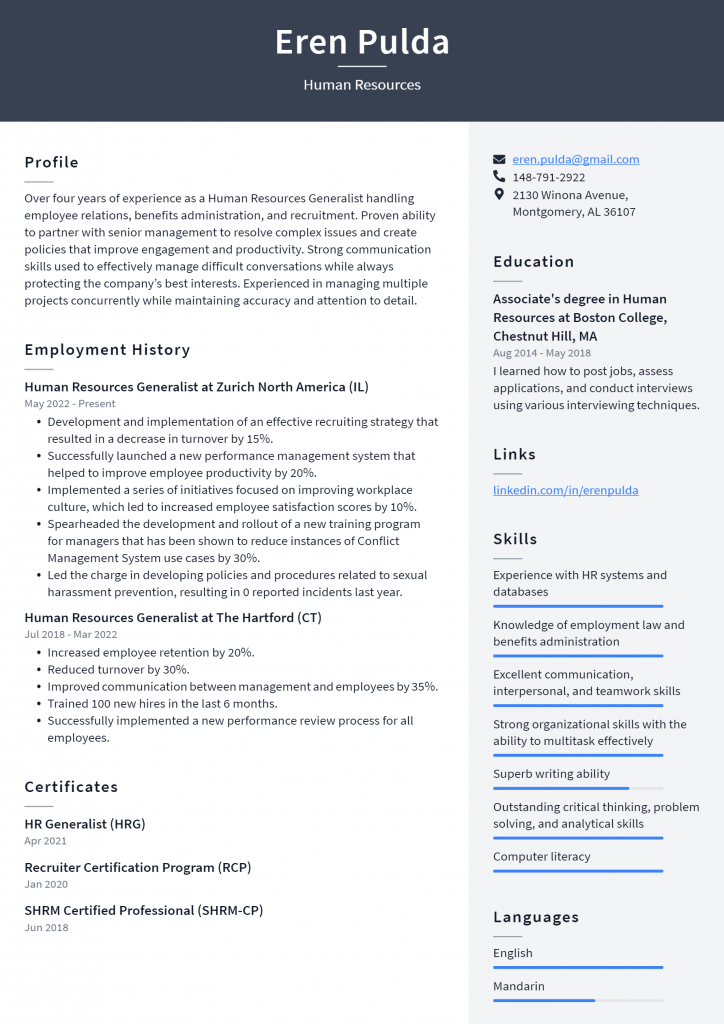
Download This Human Resources Resume as PDF
Human Resources Manager Resume Example
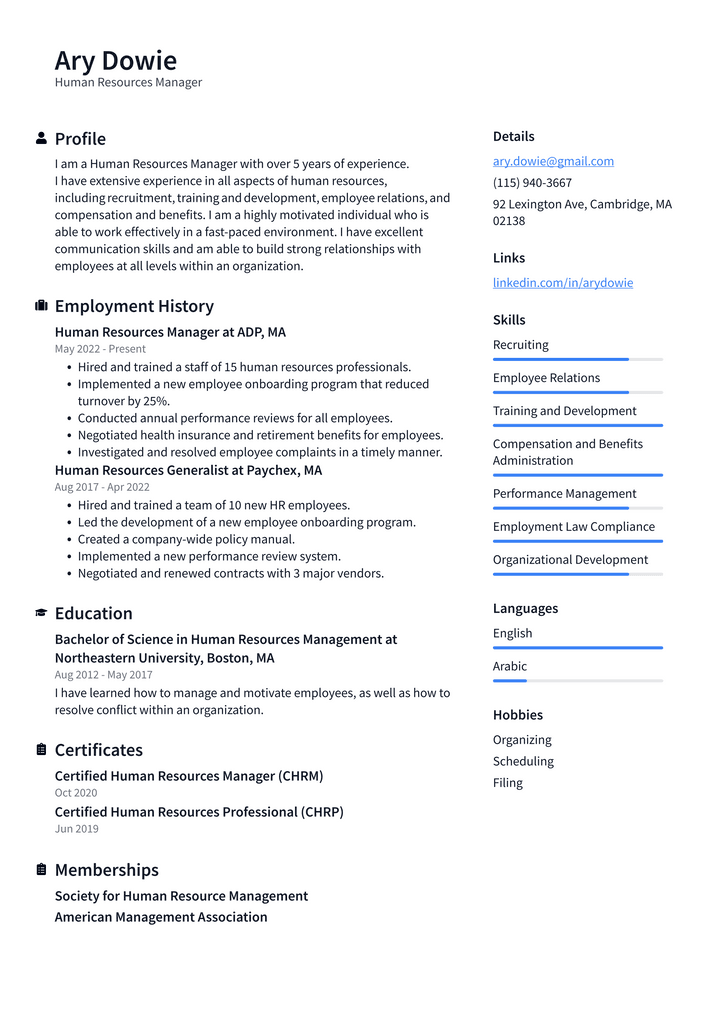
Download This Human Resources Manager Resume as PDF
Human Resources Director Resume Example
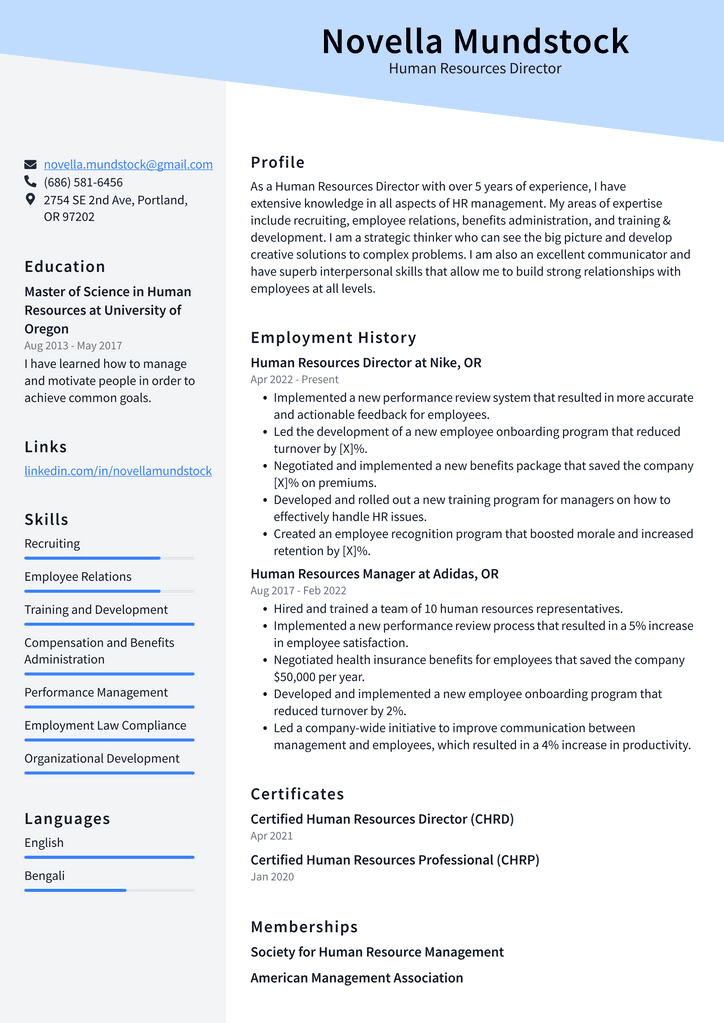
Download This Human Resources Director Resume as PDF
Human Resources Business Partner Resume Example

Download This Human Resources Business Partner Resume as PDF
Human Resources Generalist Resume Example
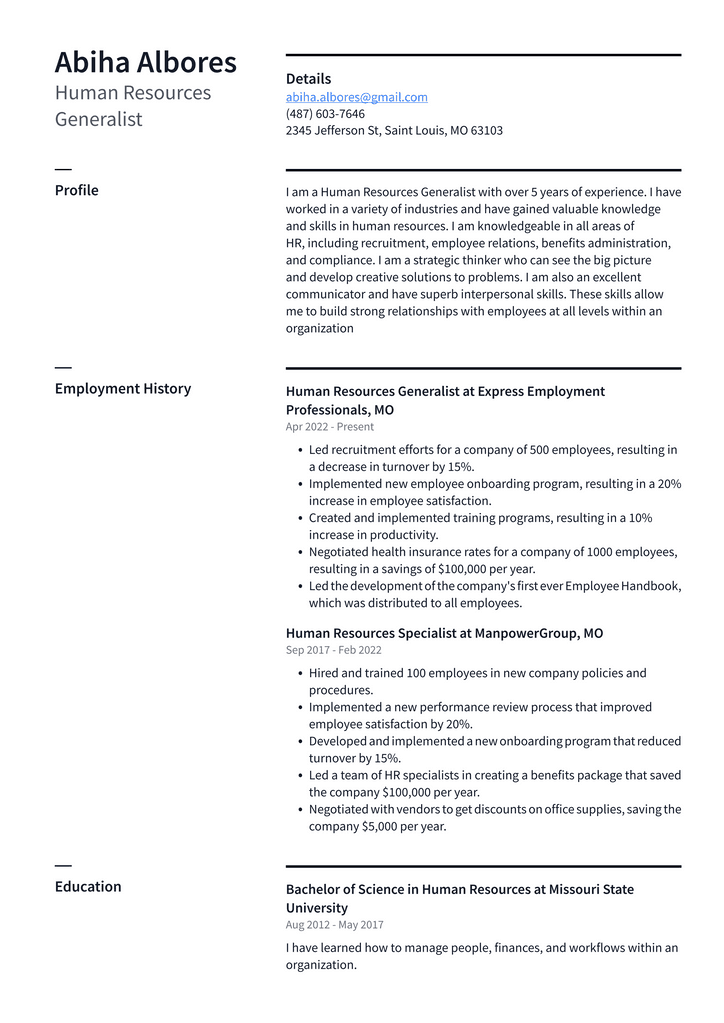
Download This Human Resources Generalist Resume as PDF
Human Resources Consultant Resume Example
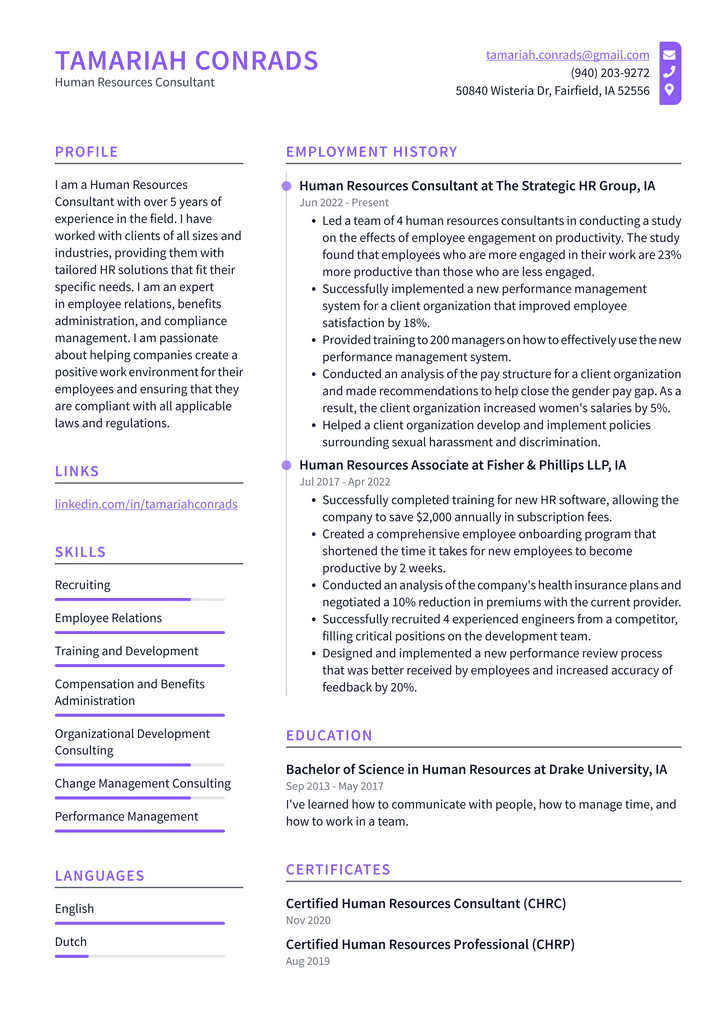
Download This Human Resources Consultant Resume as PDF
Human Resources Coordinator Resume Example

Download This Human Resources Coordinator Resume as PDF
What Should Be Included in a Human Resources Resume?
A well-written resume is an essential part of your job hunt. You may even have multiple versions of your resume tailored to different positions. For example, the human resources resume should highlight your skills, qualifications, and experience related to this field. In addition, you’ll course, you’ll want to include the standard information (name, contact information, education, etc.), but you also need to highlight the following:
Which Format Is Best for a Human Resources Resume?
While no one-size-fits-all resume format exists, a few designs work best for a human resources resume. The traditional reverse chronological resume format is the most common option for job seekers, and it works well for HR professionals. This format starts with your most recent experience and moves backward through time. While a functional resume starts with skills and abilities and works towards expertise, this is an optional format used by those with gaps in their employment history or who want to focus more on their skills and qualifications.
Tips for Writing a Strong Human Resources Resume
Again, the human resources resume is all about showcasing your skills. Here are a few tips to keep in mind as you write your resume: – Think about what employers want: Think about what employers want in a candidate. Employers want someone who can solve problems, communicate, work well with others, solve problems, and more. Make sure your resume focuses on these skills. – Stay consistent: As you write your resume, try to be as consistent as possible. Include the same sections and ensure everything is written in the same format. – Be creative: Try to make your resume creative while staying true to the standard format. It can be difficult, but you can try things like adding graphics or changing the font. – Be honest: No matter how badly you want the job, you must be honest on your resume. If you have zero experience in the field, don’t try to lie and say that you have 10 or 20 years of experience. It will backfire, and you’ll lose any chance of getting the job. – Get feedback: You should always get feedback on your resume. Whether you ask a friend or family member or hire a professional resume writer, you should always run your resume by someone else before sending it out. – Proofread: You may be excited to send out your resume, but don’t rush through the proofreading process. Read your resume carefully and make sure there are no typos or mistakes.
How to Write the Skills Section of an HR Resume
You want to highlight your skills and qualifications, but you want to do it in a relevant and impressive way. The skills section of your resume can be tricky because you need to be specific and broad enough to appeal to a wide variety of employers. If you’re struggling to come up with the right skills to include in your resume, try these tips: – Think about your past jobs and responsibilities: When you are trying to write the skills section of your resume, you want to think about the past jobs that you’ve had and the responsibilities that came with them. What did you do regularly? – Make a skills list: Once you have a list of skill sets you want to include on your resume, it’s time to put them into proper format. Start each skill with a verb, and then try to list other skills tied to that verb. Example: A managed team of 10 employees. – Try to be as general as possible: While you want to be specific on your resume, you also don’t want to be too narrow. Try to come up with skills that are general enough for many employers to find them helpful. – Focus on specific skills: You want to focus on specific skills, but also try to include a few general skills. Think about the skills you want to include, and then rank them in importance.
How to Write the Abilities/Requirements Section of an HR Resume
You want your potential employers to see you as the perfect candidate, but you must remain realistic. While you want to be confident and include lofty abilities on your resume, you also don’t want to be too bold. Here are some tips to help you write the abilities/requirements section of your resume: – Include a mix of abilities and requirements: The abilities/requirements section of your resume is the perfect place to include a combination of things you are good at and something you are looking for in a job. Try to be honest about your skills, but don’t be afraid to be confident. – Write the abilities/requirements section like a statement: The best way to write the abilities/requirements section of your resume is to write it like you would a statement. Start with a verb, and then state what you want or need. – Stay positive: While you want to be realistic, you don’t want to write a negative resume. Start each statement with a positive verb, and then be confident in your abilities and desires.
How to Write the Education Section of an HR Resume
The education section of your resume should be written in reverse chronological order. This means that you start with your most recent education and work backward. There are a few essential tips to keep in mind when writing the education section of your resume: – Start with your most recent education: Start the education section with your most recent credential. If you have multiple degrees, list them in order of importance. – Include your major and minor: If you have a specific major, include it on your resume. If you majored in a general degree, you could leave off the specific major. You can also leave off your minor if it isn’t relevant to your field. – Be specific: While you don’t have to include the dates of your education, you do want to be specific. Don’t just write “Bachelor’s Degree”; instead, write “Bachelor of Science Degree in Marketing, Graduated 2020.” – Use the proper formatting: When formatting your education section, use adequate capitalization rules.
Conclusion
A well-written resume is an essential part of your job hunt. You may even have multiple versions of your resume tailored to different positions. For example, the human resources resume should highlight your skills, qualifications, and experience related to this field. When writing your resume, start with a skills section. This is where you list all the awesome things you are good at. Next, write a abilities/requirements section. This is where you can record the items you want in a job. Finally, be sure to include your education section and format it correctly.